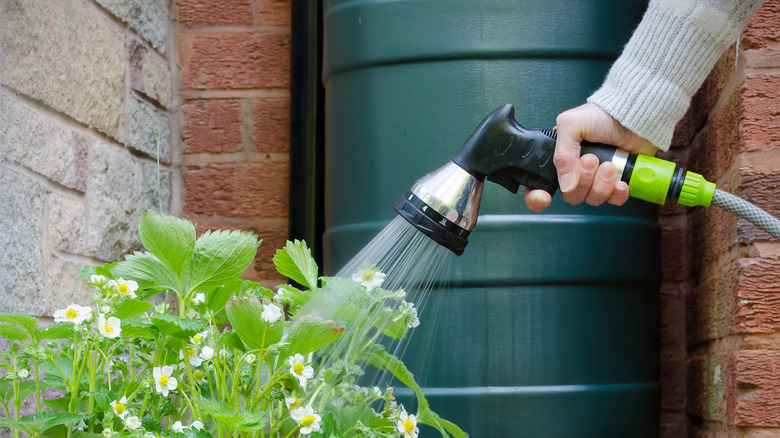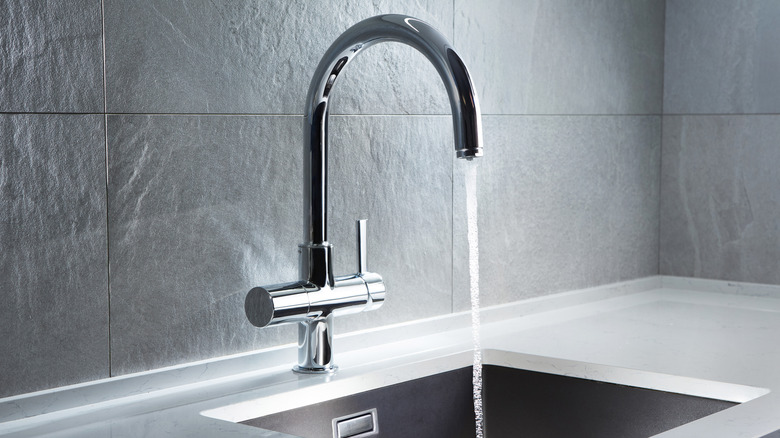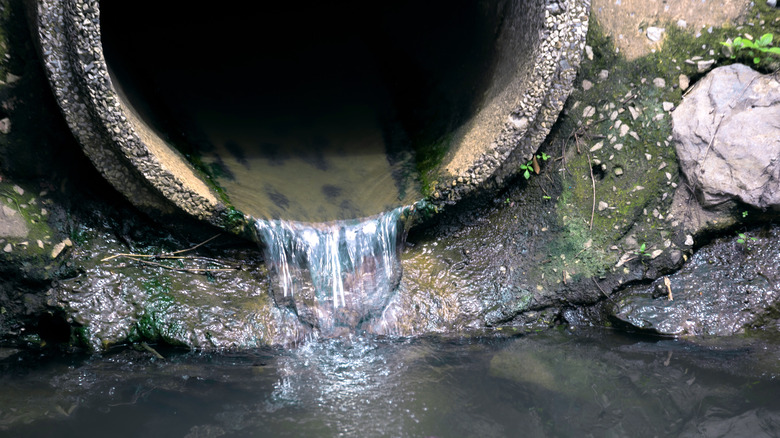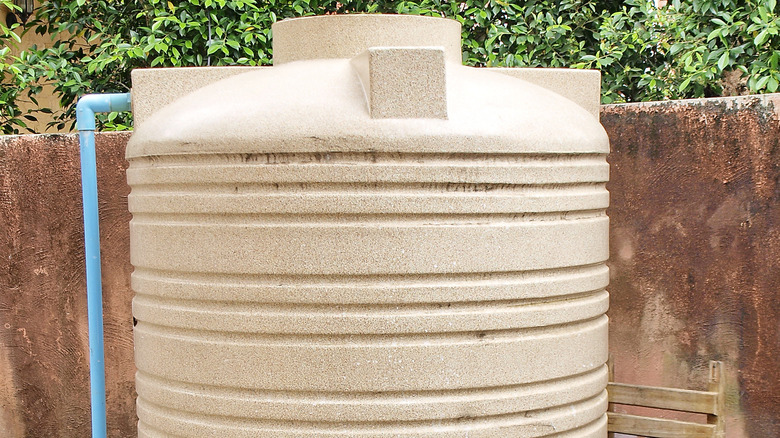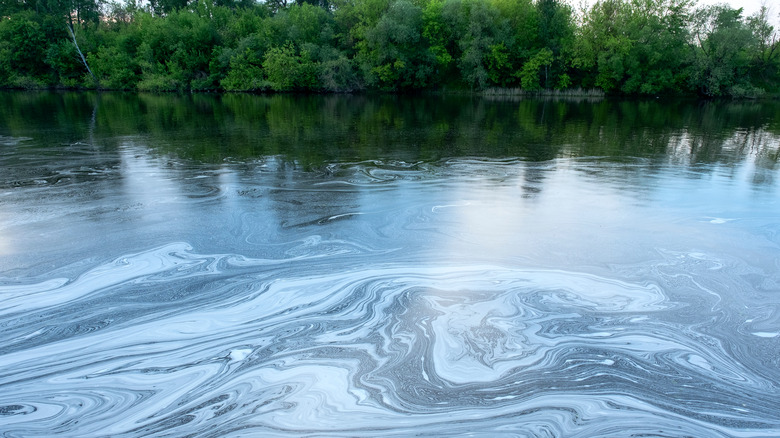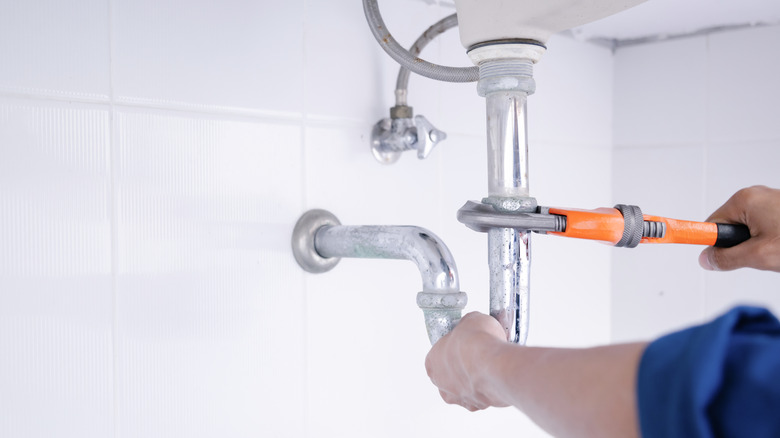What Is A Greywater System And Why Would You Want One?
The use of water continues to rise every year, and most of it gets wasted due to a lack of proper irrigation systems when it could be reused efficiently. A greywater system is perfect for preventing freshwater from being wasted. Instead of the used water going straight to the sewers, it gets redirected into an irrigation system to be reused, according to Elemental Green. The water that is being reused is greywater which comes from when you do laundry, use the dishwasher, take a shower, and take a bath.
Greywater systems have been around since the 1970s in the U.S., according to Water Use It Wisely. There is a lot that goes into deciding which system to install and how to care for it to make sure it continues to run smoothly and last a long time. It can be overwhelming for new folks who want an irrigation system due to all of the information at hand.
Why you should use a greywater system
Since most people use up to 40,000 gallons of water per year, installing a greywater system helps lower the amount of water consumption due to the water being recycled, according to Water Wise Group. It's perfect for folks who enjoy having a set routine of watering their yards; they're able to use as much water as they'd like since they're using the same water instead of new water. The water gets thoroughly cleaned, removing any debris and being left with nutrients that go into the irrigation line that is directed to your plants.
If you plan on installing a greywater system that is meant solely for watering your garden, make sure to only water their soils, especially for vegetable gardens. If the vegetables receive the water directly, it won't be healthy to absorb. It only strengthens their soil, but not their full form.
Pros and cons of greywater system
Not only does the use of an irrigation system help to reduce your utility bills with less consumption of new water, but it prevents new water from being directed into the sewers, according to Conserve Energy Future. Since there will be less freshwater usage, the energy that was required to distribute the water throughout the home will also be reduced. This will allow that energy to be used for other resources or saved if needed in an emergency.
Conserve Energy Future also mentions how reusing water will reduce chemical consumption, meaning with the reduction of water going into the sewers, there will be fewer chemical treatments to make sure the water is clean enough for the plants. It will reduce the cost of treatments and chemicals used in the environment, making it more sustainable. The irrigation system can also help filter water organically in gardens since the water and soil work together and won't need any harsh chemicals to do all the work.
While there are advantages to having a greywater system, there are some downsides. Sciencing reported that having an irrigation system can be costly, and depending on where you live, there are certain regulations you need to follow and look into. It takes a lot of patience and practice to incorporate a greywater system into your life due to the high maintenance it requires. You have to make sure not to drink the recycled water when it hasn't been properly cleaned or keep it stored for too long as it can begin to smell and make matters worse.
How to install a greywater system
Even though having someone install a greywater system can be expensive, there are inexpensive options when it comes to installing it yourself, according to Climatebiz. There are a few steps to follow if you decide to DIY a greywater system. You'll need three PVC pipes, two buckets, one storage bin, mulch, wood chips, gravel, sand, and Weld-On.
- Have a plan – You'll need to figure out exactly where you want your water to irrigate and be released, along with where the pipes are going to connect. Climatebiz uses a storage tank that has all of the greywater going into it from the washing machine that will be dispersed into the garden.
- Creating an outlet – Depending on where your water will come from, you need to create an outlet for the water to flow out of. The washing machine mentioned above is where the outlet will be, so you need to drill a hole in the wall behind the washing machine to connect it to the system. Drill a hole bigger than the pipe for it to fit perfectly.
- Setting up your Biofilter – One of your buckets will be connected to a pipe from the washing machine. You'll need to drill a hole on the side of the bucket at the top and bottom to release the water through a PVC pipe. Use Weld-On to close the space between the PVC pipe and the bucket. Repeat that step for the second bucket. For the first bucket, cover the outlet pipe with netting and zip tie the mesh to the pipe. Cover the netting with mulch and wood chips. For the second bucket, fill ⅓ of the bucket with gravel, the next ⅓ with sand, and the last ⅓ with gravel. The gravel will work as a drainage layer, and the sand will be the filter layer.
- Align the filters – Place the biofilter higher than the sand filter on a support system such as crates or chairs, then connect the filters where the water will flow into the sand filter.
- Connecting filters to storage tank – Add a coupling to the pipe that sticks out from the sand filter, then add another PVC pipe to the coupling that connects to the storage tank. Use Weld-On around the pipes to prevent water leakage. After 24 hours, the system is ready to be used.
Common mistakes to avoid
There are a series of things to look out for so that your greywater system lasts for a long time, according to Alt Water.
Invest in a self-cleaning filter that doesn't need to be switched out because if you use a manually cleaned filter, you will have to replace it consistently. Manually cleaned filters are good at keeping build up and end up getting clogged with the bacteria, solids, and nutrients.
Install a dirty water submersible pump instead of cheap pumps that will break down on you. You want a pump that will prevent clogging, catch any hair at the beginning, a check valve to allow one-way flow for the water, and be able to pass solids of up to 4 inches.
Don't store greywater for more than 24 hours, or it turns into blackwater.
When you discharge greywater, make sure to do it two inches below the surface in soil and not in natural waters. If released into environmental surfaces, it could harm and contaminate the water and destroy the algae plants.
Installation cost of greywater system
The greywater system you choose determines the cost of it. The average range of cost to install an irrigation system can be from $700 to $20,000, according to Home Advisor. There are some things to consider, such as where the system will run from if that's going to be from your washing machine to your yard or have everything connected in your home.
The cost is high due to the labor of having someone install it. You have to hire a plumber in order for them to do all the plumbing if you decide to install the irrigation system yourself as a DIY activity. Plumbers know how to navigate the water lines and set up the system.
The greywater system itself can range from $500 to $11,000 per Home Advisor. Some greywater systems you could purchase are Aqua2use Greywater Diversion System, Rainharvest Systems Household System, Aqua2use Pro, and Flotender GXL Greywater Irrigation System.
